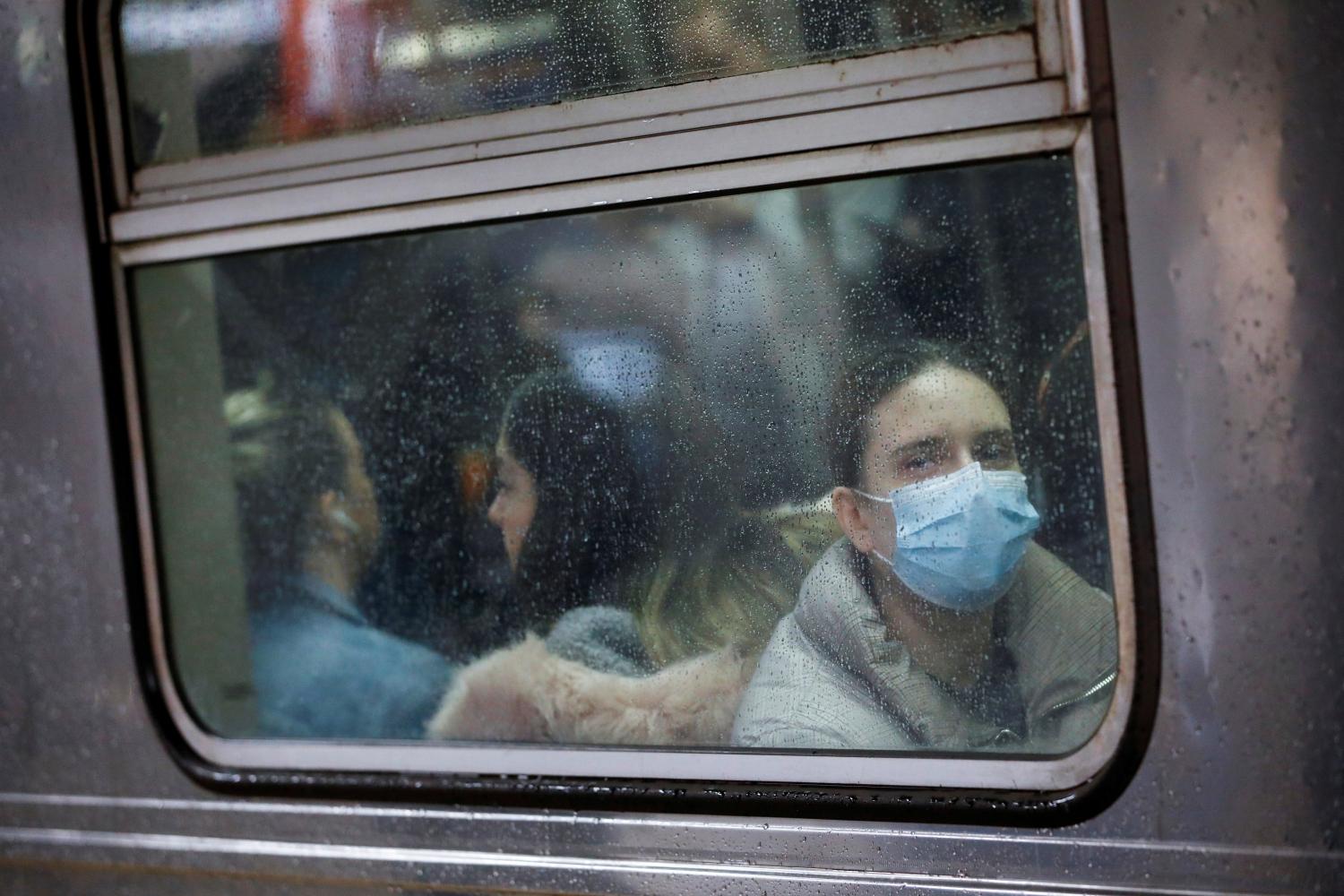This is an updated version of a post published on May 29, which adds new data from the latest week of COVID-19 cases as of May 25 through May 31.
After more than two months of a national economic shutdown, much of the U.S. is starting to reopen. However, COVID-19 is continuing to spread to more parts of the country; since late April, counties with a high prevalence of cases have transitioned from “blue” America to “red,” where arguments for immediate reopening have been more pervasive.
This transition is reflected in both the demographic attributes and political orientation in the most recently exposed parts of the country. Over the six weeks from April 20 to May 31, counties newly designated as having a high COVID-19 prevalence are decidedly less dense, less diverse, and more likely to have voted for Donald Trump in the 2016 presidential election than was the case for new high-prevalence counties before mid-April.
This analysis extends our previous weekly monitoring of counties reaching high COVID-19 prevalence (defined as at least 100 cases per 100,000 population based on case data reported by The New York Times and 2019 population data reported by the U.S. Census Bureau). On March 29, 8% of the U.S. population lived in the then-59 high COVID-19 prevalence counties. By May 31, the number of high-prevalence counties increased to 1,859, representing 86% of the population. As this analysis makes plain, there is a clear distinction in the demographic and political make-up of counties that reached high COVID-19 prevalence between March 30 and April 19, and those reaching that status between April 20 and May 31.

Mapping the shift in demographics
High COVID-19 prevalence counties as of March 29 were distinct in terms of their demographic make-up and geographic location. Heavily concentrated in the Northeast region and especially in the New York metropolitan area, these were the pandemic’s initial “hot spots,” which included counties associated with metropolitan Boston, Detroit, Seattle, and New Orleans. As Figure 1 shows, more than four-fifths of the residents in these counties live in highly dense urban cores. Fewer than half (48%) of these counties’ residents are white, with 22%, 18%, and 10% identifying as Latino or Hispanic, Black, and Asian American, respectively. Fully one-quarter of these counties’ residents are foreign-born.
County map


During the three-week period between March 30 to April 19, the 655 new high-prevalence counties were more broadly spread across the country. Midwestern counties associated with metropolitan Chicago, Indianapolis, St. Louis, Milwaukee, and more of Detroit reached high-prevalence status, as did many smaller metropolitan and nonmetropolitan counties in the region. In the South, there was an expansion of high-prevalence counties in several states—most notably Georgia, Louisiana, and Mississippi—along with counties associated with a string of metro areas that included Atlanta, Baltimore, Miami, Washington, D.C., and Memphis and Nashville, Tenn. There was also a rising COVID-19 footprint in the West that included, among others, the populous California counties of San Francisco, Los Angeles, and Riverside.
Compared with the situation before March 29, the March 30 to April 19 period shows COVID-19 dispersion across suburbs and smaller metropolitan counties instead of primarily dense urban cores. These latter populations were slightly less diverse, at 56% white, than those prior to this period, and were less likely to be foreign-born.
The subsequent six-week period, between April 20 and May 31, brings a more marked change in the 1,145 new high-prevalence counties, which reflect 38% of the U.S. population. First, they are far less Northeast-concentrated than earlier counties, with only 4% of the new high-prevalence population residing in that region. Most notable during the latest period is the expansion in the South, where 558 counties reached high COVID-19 prevalence. The largest number of these were in Texas (90 counties) and Virginia (70), along with 60 new counties in Georgia and 53 in North Carolina. There was also an increased presence in Florida, Kentucky, Tennessee, and South Carolina.
In the Midwest, 438 counties reached high COVID-19 prevalence—the largest numbers were in Iowa (66 counties), Indiana (47), and Illinois (45), with Minnesota, Nebraska, and Ohio adding more as well. While there were several new metropolitan counties that reached high-prevalence status in both the South (Austin, Dallas, and Orlando and Tampa, Fla.), and the Midwest (Minneapolis, Pittsburgh, and Kansas City, Mo.), the vast majority of new high-prevalence counties (788) in these regions were small and nonmetropolitan counties
With the exception of the West, where several populous counties in California, Arizona, and Oregon make up a substantial portion of the new high-prevalence population, the national picture of counties reaching that status from April 20 to May 31 is one of a less urban population. More than half of these counties’ residents are associated with outer suburbs, smaller metropolitan areas, and areas outside metropolitan areas. The newest high-prevalence counties also have higher share of white (62%), native-born (88%), and middle-income residents than earlier populations.
Mapping the shift in political orientation
In our weekly tracking, it became clear that the period after April 20 marked a change in the political orientation of new high COVID-19 prevalence counties. In each week prior to April 20, high-prevalence counties were home to populations that gave more votes to Hillary Clinton than Donald Trump in the 2016 presidential election. However, for each week since April 20, Trump won more voters in new high-prevalence counties.
This is summarized in Figure 1, which shows Clinton besting Trump by a margin of 62 to 34 in high-prevalence counties as of March 29, and by a margin of 54 to 40 for new counties between March 30 and April 19. But in the 1,145 counties reaching high COVID-19 prevalence between April 20 and May 31, Trump bested Clinton by a margin of 50 to 45.

When looking at the number of counties in which either Trump or Clinton won the popular vote (Table 3), it is clear that Trump’s advantage takes off for counties newly identified with high COVID-19 prevalence during the April 20 to May 31 time frame. Among these counties, Trump won more than six times as many as Clinton (993 to 152). This is a much greater advantage than he held among new high-prevalence counties during the March 30 to April 19 period (440 to 215). Among counties identified as high-prevalence before March 29, Clinton won 33 and Trump won 26.
Clearly, the demographic attributes of the most recently identified high-prevalence counties are more favorable to Trump, given his popularity in smaller and rural areas and among white voters. This is also made plain by examining the geographic locations of Trump counties and Clinton counties among those identified as high-prevalence through April 19 in Map 2, and those so identified between April 20 and May 31 in Map 3.
County map 2
County map 3
The stronger showing for Clinton in high-prevalence counties identified before mid-April (shown in Map 2) can be attributed to the concentration of “blue” coastal and large metropolitan counties in the Northeast and Midwest, but also parts of the South and West. Major Clinton voting counties in the Boston-Washington, D.C. corridor—and other metro areas such as Chicago, Detroit, Atlanta, Los Angeles, and San Francisco—countered the suburban and smaller areas in these regions, which tended to favor Trump.
The newer counties displayed in Map 3 show large swaths of Trump voters in a plethora of smaller and nonmetropolitan counties, particularly in Midwest and Southern states such as Iowa, Indiana, Ohio, Nebraska, Texas, and Georgia. Notably, many of these Trump-won areas are smaller counties in the swing states of Michigan, Pennsylvania, Wisconsin, North Carolina, and Florida. Among the 895 smaller metropolitan and nonmetropolitan counties shown in Map 3, Trump won nearly nine out of 10 in 2016.
Another way to look at these shifts is to examine states where at least half of the population lives in high-prevalence counties. As of April 19, 20 states had reached this status, 14 of which voted for Clinton in 2016. But between April 20 and May 24, 25 additional states had more than half of their population living in high-prevalence counties. Of these, 20 voted for Trump in 2016, including Arizona, Florida, Texas, North Carolina, and Wisconsin.
Following future COVID-19 shifts
Our continued tracking of counties with a high COVID-19 prevalence rate reveals a distinct transition of the pandemic’s spread from urbanized, racially diverse, and Democratic-leaning parts of the country to broader areas of the nation, especially those with a substantial Republican base. The implications of these shifts involve more than politics, as larger parts of the country reopen for business and recreation and subsequently face the health risks of the coronavirus.
Hopefully, such monitoring of the pandemic’s spread can inform the way local officials, governors, and national leaders of both political parties address their local conditions—and potentially tamp down the recent politicization of this crisis.
The Brookings Institution is committed to quality, independence, and impact.
We are supported by a diverse array of funders. In line with our values and policies, each Brookings publication represents the sole views of its author(s).








Commentary
Mapping COVID-19’s spread from blue to red America
June 3, 2020